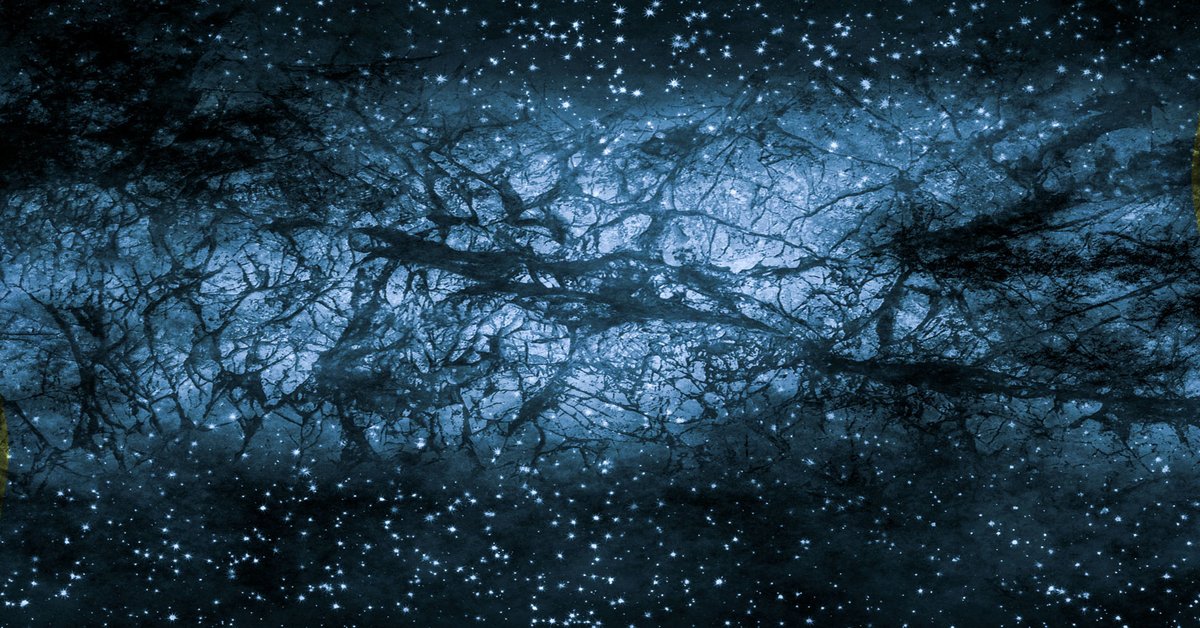Ever since humans first looked to the sky and observed the stars and constellations, we have been trying to decode the enigmas of the universe. Perhaps none is as evasive, or ironically, abundant, as dark matter. Vantablack, you might wanna take a seat for this…
Constituting approximately 85 % of all matter in the universe, dark matter matters as it’s equivalent to about 27 % of the total mass of the universe.
Humankind hasn’t been able to concretely prove it exists by using direct, observational evidence – but scientists are confident in its existence. Through a process of elimination, we are much more certain about what dark matter isn’t, than we are about what it is.
Let’s dive into the mysterious material that makes the heads of physicists spin.
Mysterious dark matter.
It’s the year 1933. Swiss astronomer Fritz Zwicky noticed an anomaly when he was studying Hubble’s (the person, not the telescope named after the person) observations of the Coma Cluster of galaxies.
According to the measure of visible mass, single galaxies were spinning too rapidly for the cluster to remain bound together. Observations indicated they must have masses ten times greater than their visible contents – stars, planets and dust clouds – otherwise they would tear themselves apart.
He thought that there must be some form of mass in between giant cosmic bodies that’s glueing them together. And that intense, sheer gravitational force is then postulated to be a missing, invisible mass, dubbed ‘dunkle materie’ by Zwicky, or ‘dark matter’.
To this day scientists still aren’t sure what makes up dark matter, however, two leading theories are proposed to explain its apparent presence. And they are amusingly named WIMPs and MACHOs.
The weaklings of dark matter.
WIMPs, or weakly interacting massive particles, have the strongest theoretical case for their existence by far. They are hypothetical, exotic particles that don’t interact strongly with other particles or electromagnetic forces. This means they don’t absorb, reflect or emit light, making them extremely hard to spot.
But what particles qualify as a WIMP?
Some physicists reckon sterile neutrinos could be strong candidates as WIMPs. (Yes, we see the irony) These hypothetical particles only interact through gravity and not through any standard model of particle interactions.
Other physicists hypothesise axions, particles that may have been produced in the early universe, to be candidates for WIMPs. They’re believed to clump together at a snail pace, potentially affecting the motion of galaxies, just like how dark matter is thought to act.
The studs of dark matter.
MACHOs, or massively astrophysical compact halo objects, are said to be composed of baryonic matter (a fancy word for ordinary material) that emits little to no light and drifts through space as wandering cosmic bodies.
Baryonic matter could be tied up in neutron stars, brown dwarfs (failed stars), black holes, rogue planets or any small, dense chunks of heavy elements.
So are you team WIMP or team MACHO?
Alternatives to dark matter.
While scientists have been on the hunt for dark matter for decades, alternatives to the theory have been surfacing too.
One of the most popular alternative gravity theories that has been waging war with the dark matter theory is the Modified Newtonian Dynamics (MOND) model. Described in several papers and preprints, researchers suggest that exploring and modifying Newton’s laws of gravity could explain the gravitational forces holding clusters of galaxies together.
Though the MOND model has successfully described some of the universe’s first light, there are still many gaps remaining and researchers are working hard to improve it in tandem with the dark matter theory.
Finding dark matter.
One of the most exciting projects investigating the presence of WIMPs harnesses the power of the Large Hadron Collider, the largest and highest-energy particle collider on Earth. The collider comprises a massive 27-kilometre ring of superconducting magnets with accelerating structures to boost the energy of particles along the way.
In the accelerator, two high-energy particle beams travel in opposite directions, close to the speed of light. When the beams meet each other in a magnificent collision, theories say dark matter particles could be generated. However, as the particles would escape through the detectors unnoticed, researchers can only infer their presence from the amount of energy and momentum missing after the collision.
Meanwhile, construction of the Southern Hemisphere’s first dark matter underground physics laboratory is progressing in a decommissioned gold mine located in regional Victoria, Australia.
The Stawell Underground Physics Laboratory, situated one kilometre underground, poses a golden opportunity to search for elusive dark matter. Once built, scientists at the facility will participate in the Sodium Iodide with Active Background Rejection Experiment (SABRE) to detect dark matter particles via their scattering off nuclei. Working together with its Northern Hemisphere counterpart located at the Laboratori Nazionali del Gran Sassi in Italy, the double-measurement will improve the reliability of the results, in hopes of unveiling the mysteries surrounding dark matter.
While scientists haven’t yet found signs of the elusive stuff, it will be exciting to see if these large-scale experiments can bring us one step closer to shining a light on the existence of dark matter.
And it appears that physicists do have a better sense of humour when it comes to naming things… Better than IT experts, that is!




































